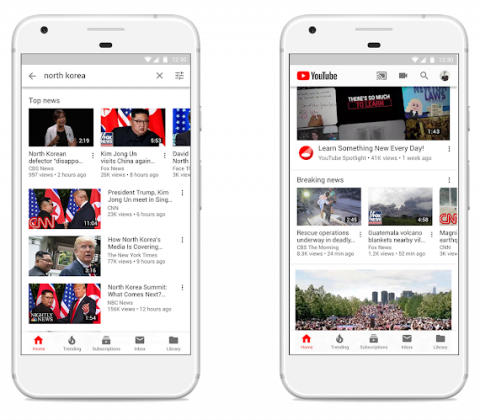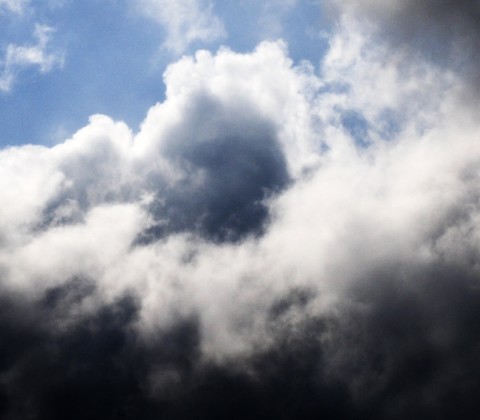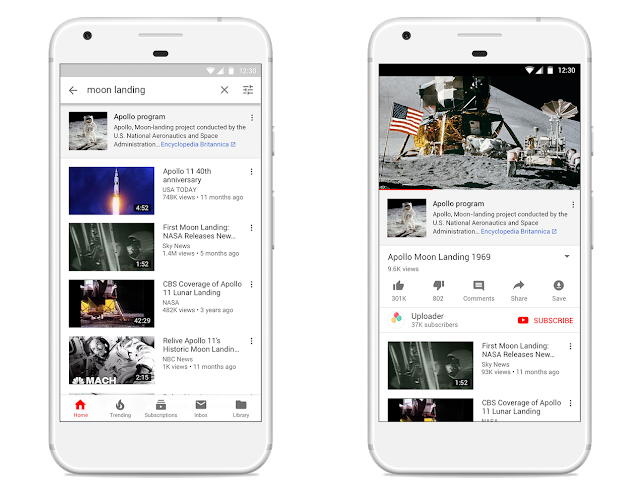Posts Tagged: building
Tesla is building a Megapack factory in Shanghai
Tesla is building a new battery factory in Shanghai. On Sunday, the automaker announced it would start construction on a new Megapack facility later this year. Once the plant is complete sometime before the second half of 2024, it will be capable of producing 10,000 Megapacks annually. Each container-sized battery can store enough energy to power about 3,600 homes for one hour. Tesla told Bloomberg it plans to sell the Megapacks it makes in China globally. The company has built Megapack installations in a few locations around the world, including Texas and South Australia.
Tesla opening Megapack factory in Shanghai to supplement output of Megapack factory in California https://t.co/hDpqoyNeOx
— Elon Musk (@elonmusk) April 9, 2023
Sunday’s announcement sees Tesla increasing its reliance on China at a time when the US is using economic policy to push automakers and other manufacturers to produce more of their products domestically. At the end of last month, the Treasury Department issued updated guidance detailing what electric vehicles qualify for the Inflation Reduction Act’s $ 7,500 EV tax credit. Under the updated rules, the department states companies must source the minerals in their car batteries from the US and other approved trading partners for the vehicles to qualify for the incentive. Separately, the Biden administration recently said CHIPS Act funding recipients would need to sign agreements promising they won’t expand production capacity in China.
This article originally appeared on Engadget at https://www.engadget.com/tesla-is-building-a-megapack-factory-in-shanghai-190151633.html?src=rss
Engadget is a web magazine with obsessive daily coverage of everything new in gadgets and consumer electronics
NYU is building an ultrasonic flood sensor network in New York’s Gowanus neighborhood
People made some 760 million trips aboard New York’s subway system last year. Granted, that’s down from around 1.7 trillion trips, pre-pandemic, but still far outpaced the next two largest transit systems — DC’s Metro and the Chicago Transit Authority — combined. So when major storms, like last year’s remnants of Hurricane Ida, nor'easters, heavy downpours or swelling tides swamp New York’s low lying coastal areas and infrastructure, it’s a big deal.
And it’s a deal that’s only getting bigger thanks to climate change. Sea levels around the city have already risen a foot in the last century with another 8- to 30-inch increase expected by mid century, and up to 75 additional inches by 2100, according to the New York City Panel on Climate Change. To help city planners, emergency responders and everyday citizens alike better prepare for 100-year storms that are increasingly happening every couple, researchers from NYU’s Urban Flooding Group have developed a street-level sensor system that can track rising street tides in real time.
The city of New York is set atop a series of low lying islands and has been subject to the furies of mid-Atlantic hurricanes throughout its history. In 1821, a hurricane reportedly hit directly over the city, flooding streets and wharves with 13-foot swells rising over the course of just one hour; a subsequent Cat I storm in 1893 then scoured all signs of civilization from Hog Island, and a Cat III passed over Long Island, killing 200 and causing major flooding. Things did not improve with the advent of a storm naming convention. Carol in 1954 also caused citywide floods, Donna in ‘60 brought an 11-foot storm surge with her, and Ida in 2021 saw an unprecedented amount of rainfall and subsequent flooding in the region, killing more than 100 people and causing nearly a billion dollars in damages.
As the NYC Planning Department explains, when it comes to setting building codes, zoning and planning, the city works off of FEMA’s Preliminary Flood Insurance Rate Maps (PFIRMs) to calculate an area’s flood risk. PFIRMs cover the areas where, “flood waters are expected to rise during a flood event that has a 1 percent annual chance of occurring,” sometimes called the 100-year floodplain. As of 2016, some 52 million square feet of NYC coastline falls within that categorization, impacting 400,000 residents — more than than the entire populations of Cleveland, Tampa, or St. Louis. By 2050, that area of effect is expected to double and the probability of 100-year floods occuring could triple, meaning the chances that your home will face significant flooding over the course of a 30-year mortgage would jump from around 26 percent today to nearly 80 percent by mid-century.
As such, responding to today’s floods while preparing for worsening events in the future is a critical task for NYC’s administration, requiring coordination between governmental and NGOs at the local, state and federal levels. FloodNet, a program launched first by NYU and expanded with help from CUNY, operates on the hyperlocal level to provide a street-by-street look at flooding throughout a given neighborhood. The program began with NYU’s Urban Flooding Group.
“We are essentially designing, building and deploying low cost sensors to measure street level flooding,” Dr. Andrea Silverman, environmental engineer and Associate Professor at NYU’s Department of Civil and Urban Engineering, told Engadget. “The idea is that it can provide badly needed quantitative data. Before FloodNet, there was no quantitative data on street level flooding, so people didn't really have a full sense of how often certain locations were flooding — the duration of the floods, the depth, rates of onset and drainage, for example.”
“And these are all pieces of information that are helpful for infrastructure planning, for one, but also for emergency management,” she continued. “So we do have our data available, they send alerts to see folks that are interested, like the National Weather Service and emergency management, to help inform their response.”
FloodNet is currently in early development with just 23 sensor units erected on 8-foot tall posts throughout the Gowanus neighborhood in Brooklyn, though the team hopes to expand that network to more than 500 units citywide within the next half decade. Each FloodNet sensor is a self-contained, solar-powered system that uses ultrasound as an invisible rangefinder — as flood waters rise, the distance between the street surface and the sensor shrinks, calculating the difference between that and baseline readings shows how much the water level has risen. The NYU team opted for an ultrasound-based solution rather than, say LiDAR or RADAR, due to ultrasound tech being slightly less expensive and providing more focused return data, as well as being more accurate and requiring less maintenance than a basic contact water sensor.
The data each sensor produces is transmitted wirelessly using a LoRa transceiver to a gateway hub, which can pull from any sensor within a one-mile radius and push it through the internet to the FloodNet servers. The data is then displayed in real-time on the FloodNet homepage.
”The city has invested a lot in predictive models [estimating] where it would flood with a certain amount of rain, or increase in tide,” Silverman said. Sensors won’t have to be installed on every corner to be most effective, she pointed out. There are “certain locations that are more likely to be flood prone because of topology or because of the sewer network or because of proximity to the coast, for example. And so we use those models to try to get a sense of locations where it may be most flood-prone,” as well as reach out to local residents with first-hand knowledge of likely flood areas.
In order to further roll out the program, the sensors will need to undergo a slight redesign, Silverman noted. “The next version of the sensor, we're taking what we've learned from our current version and making it a bit more manufacturable,” she said. “We're in the process of testing that and then we're hoping to start our first manufacturing round, and that's what's going to allow us to expand out”.
FloodNet is an open-source venture, so all of the sensor schematics, firmware, maintenance guides and data are freely available on the team’s GitHub page. “Obviously you need to have some sort of technical know-how to be able to build them — it may not be right now where just anyone could go build a sensor, deploy it and be online immediately, in terms of being able to just generate the data, but we're trying to get there,” Silverman conceded. “Eventually we'd love to get to a place where we can have the designs written up in a way that anyone can approach it.”
Safer Internet Day: 5 ways we’re building a safer YouTube
Keeping you and your family safe online is a top priority at YouTube. Today on Safer Internet Day, we’re sharing some of the ways we work to keep YouTube safe, and how you can be more in control of your YouTube experience. From built-in protections to easy-to-use tools, we hope you’ll take advantage of these tips:
1. Learn more about the content available on YouTube
We work hard to maintain a safe community and have guidelines that explain what we allow and don’t allow on YouTube. Most of what we remove is first-detected by machines, which means we actually review and remove prohibited content before you ever see it. But no system is perfect, so we make sure if you see something that doesn’t belong on YouTube, you can flag it for us and we’ll quickly review it. If you want to know what happened to a video you flagged, just visit your reporting history to find out.
2. Learn more about what data we collect and how to update your privacy settings
Check out Your Data in YouTube to browse or delete your YouTube activity and learn more about how we use data. Your YouTube privacy settings include managing your search and watch history. If you prefer more private viewing, you can use Incognito mode on the YouTube mobile app or Chrome browser on your computer. Learn more.
You can also take the Privacy Checkup and we’ll walk you through key privacy settings step-by-step. For YouTube, you’ll be able to do things like easily pause your YouTube History, or automatically delete data that may be used for your recommendations.
3. Check in on your security settings and keep your passwords safe
Head over to Security Checkup for personalized recommendations to help protect your data and devices across Google, including YouTube. Here, you can manage which third-party apps have access to your account data and also take the Password Checkup, which tells you if any of your passwords are weak and how to change them. In addition, you can access Password Manager in your Google Account to help you remember and securely store strong passwords for all your online accounts.
4. Learn more about how ads work and control what ads you see on YouTube
We do not sell your personal information to anyone, and give you transparency, choice and control over how your information is used as a part of Google. If you’re curious about why you’re seeing an ad, you can click on Why this ad for more information. If you no longer find a specific ad relevant, you can choose to block that ad by using the Mute this ad control. And you can always control the kinds of ads you see, or turn off ads personalization any time in your Ad Settings.
5. Try the YouTube Kids app, built with parental controls
We recommend parents use YouTube Kids if they plan to allow kids under 13 to watch independently. YouTube Kids is a separate app with family-friendly videos and parental controls. We work hard to keep the videos on YouTube Kids suitable for kids and have recently reduced the number of channels on the app. The app also empowers parents to choose what’s the right experience for their kids and family, such as which content is available for their kids, how long they can use the app for and much more.
In addition to YouTube Kids, we also recently made changes to Made for Kids content on YouTube to better protect children’s privacy.
Finally if you have any questions or feedback, let us know! We are available 24/7 on @TeamYouTube, or you can always check out our YouTube Help Community to learn about the latest announcements. Responsibility is our number one priority, and together with you, we will continue our ongoing efforts to build a safer YouTube.
— The YouTube Team
[TA Deals] Start building your own robots with this Edge Kit for Arduino (21% off)
If you like to tinker, you’ve probably heard of Arduino, which is great for anyone looking to get into DIY robots and automation. And if you already have an Arduino, we’ve got a really cool kit that’s going to make it even more fun to play with. The Rollarm Kit for Arduino will allow you […]
Come comment on this article: [TA Deals] Start building your own robots with this Edge Kit for Arduino (21% off)
Jaguar confirms that the I-Pace team is building an electric XJ

Engadget RSS Feed


Building a better news experience on YouTube, together
The work of trusted journalistic organizations is as critical as ever, especially when it comes to seeking information about current events online.
In March, the Google News Initiative (GNI) kicked off with the goal of helping journalism thrive in the digital age. Today, we’re announcing steps we’re taking with the GNI to support the future of news in online video, and product features we’ve been working on to improve the news experience on YouTube.
Supporting journalism with technology that allows news to thrive
We believe quality journalism requires sustainable revenue streams and that we have a responsibility to support innovation in products and funding for news.
For example, in 2015 European publishers came to us to ask about how they could scale their video efforts, especially because maintaining video delivery infrastructure is costly. Working alongside them we launched Player for Publishers, a solution that enables news organizations to use YouTube’s video player to give viewers a world-class video experience across their own websites and mobile apps. Player for Publishers reduces costs and offers improved monetization for news organizations.
Since then, we’ve expanded these efforts beyond Europe. Today, over 100 publishers in more than 25 countries use Player for Publishers.
As part of the launch of GNI in March, we announced funding to support the future of news. Today we are committing $ 25M to a YouTube-specific investment:
- Expertise. We’re establishing a working group with news organizations and experts from around the world to help us develop new product features, improve the news experience on YouTube, and tackle emerging challenges. News organizations including Vox Media, Jovem Pan, and India Today are early members of the working group. We’re looking forward to having more join as we convene the group in the coming weeks.
- Innovation Funding. We will provide funding across approximately 20 global markets to support news organizations in building sustainable video operations. Provided on an application basis to news organizations of all types, these grants will enable our partners to build key capabilities, train staff on video best practices, enhance production facilities and develop formats optimized for online video.
- Support. We’re significantly expanding our team focused on supporting news publishers. These specialists will be based around the world and support partners with training and best practices in formats, audience development, day-to-day platform operations, and sophisticated technical integrations.
News organizations interested in more information about these efforts can sign up here.
Making authoritative sources readily accessible
Authoritativeness is essential to viewers, especially during fast-moving, breaking news events, so we’ve been investing in new product features to prominently surface authoritative sources:
Providing more sources and context on breaking news
After a breaking news event, it takes time to verify, produce and publish high-quality videos. Journalists often write articles first to break the news rather than produce videos. That’s why in the coming weeks in the U.S. we will start providing a short preview of news articles in search results on YouTube that link to the full article during the initial hours of a major news event, along with a reminder that breaking and developing news can rapidly change.
Expanding Top News and Breaking News
To make it easier to find quality news, our Top News shelf prominently highlights videos from news sources in search results (see the picture below on the left). And when a breaking news event happens, we want users to know about it. That’s why our Breaking News shelf highlights videos from news organizations about that event directly on the YouTube homepage (see the picture below on the right). Today, our Top News and Breaking News features are launched in 17 countries, including the U.S., U.K., France, Italy, Japan, India, Mexico, Brazil, South Africa, Nigeria and more. We will double that number in the coming months.
Showcasing more local news, starting with the U.S.
Many people want, value, and trust local news. And when a major event happens, local reporters are often the first on site to capture events as they unfold. We’ve begun testing features that surface local news in the YouTube app for TV screens across 25 media markets around the United States, making it easy to access local news in the living room–our fastest growing screen. So far, local news has seen strong engagement, and we will be expanding it to dozens more markets like Cincinnati, Las Vegas and Kansas City.
Providing context to help people make their own decisions
We also believe users should be able to choose and make their own judgments about the information they consume along with context to inform their judgments. That’s why we’re rolling out a few new features that we will continue to build upon:
Giving users more sources of information on topical searches and videos
Starting today, users will begin seeing information from third parties, including Wikipedia and Encyclopædia Britannica, alongside videos on a small number of well-established historical and scientific topics that have often been subject to misinformation, like the moon landing and the Oklahoma City Bombing.
Investing in digital literacy education
Along with the Google News Initiative and Google.org, we have teamed up with the Poynter Institute, Stanford University, Local Media Association, and the National Association for Media Literacy Education (NAMLE) to support MediaWise, a U.S.-based initiative designed to equip 1 million teens with digital literacy skills. Six incredible YouTube Creators, including John Green, Ingrid Nilsen, and Mark Watson, will be working with MediaWise to bring awareness to digital literacy and help educate teens.
We remain committed to working with the journalism community to build a more sustainable video ecosystem for news organizations. We know there is a lot of work to do, but we’re eager to provide a better experience to users who come to YouTube every day to learn more about what is happening in the world from a diversity of sources.
– Neal Mohan, Chief Product Officer and Robert Kyncl, Chief Business Officer
Samsung might start building its mythical Galaxy X folding smartphone this year
Rumors of a bendable, foldable smartphone from Samsung have been floating around for years. There are more questions than answers at this point, but it’s looking (slightly) more likely that Samsung will indeed start manufacturing the so-called Galaxy X folding smartphone this year. The company has already publicly stated that the phone would launch in […]
Come comment on this article: Samsung might start building its mythical Galaxy X folding smartphone this year
[TA Deals] Take 34% off this DIY Building Block Fly ‘n Drive Drone!
Drones are fun, and building blocks are fun. Why not combine the two? That’s exactly what you get with the DIY Building Block Fly ‘n Drive drone, which combines a remote controlled drone that you’re able to build on top of with your own building blocks, like LEGO. Includes 2.4GHz transmitter for long-range flight control […]
Come comment on this article: [TA Deals] Take 34% off this DIY Building Block Fly ‘n Drive Drone!
Mercedes is building smarter headlights for its cars of the future
 In a dark garage at the Mercedes-Benz headquarters in Stuttgart, Germany, a flat gray S-Class illuminates a white screen at the end of long hall. The headlights blast on and while the light is bright, it's not that impressive. Then Stefan Toepfer, el…
In a dark garage at the Mercedes-Benz headquarters in Stuttgart, Germany, a flat gray S-Class illuminates a white screen at the end of long hall. The headlights blast on and while the light is bright, it's not that impressive. Then Stefan Toepfer, el…
Engadget RSS Feed
NEC serves up a slice of Pi, will start building Raspberry Pi 3s into its displays
NEC and Raspberry Pi are partnering in display and micro-computing to augment the P and V series of professional displays with the credit-card sized Pi system. Future signage and presentation screens should be more connected than ever.
The post NEC serves up a slice of Pi, will start building Raspberry Pi 3s into its displays appeared first on Digital Trends.
HTC is reportedly building two versions of the midrange Desire 10
HTC is hard at work on a number of new midrange handsets, set to be called the Desire 10 Pro and Desire 10 Lifestyle. According to Evan Blass, the Desire 10 Lifestyle will feature a quad-core processor, 13MP camera, and up to 3GB of RAM.
The post HTC is reportedly building two versions of the midrange Desire 10 appeared first on Digital Trends.
China has just finished building the world’s largest alien-hunting telescope
Is there alien life out there? Now that it’s finished building its FAST radio telescope – the largest of its kind in the world – China hopes to find out.
The post China has just finished building the world’s largest alien-hunting telescope appeared first on Digital Trends.
Dubai is building a $1 billion skyscraper that may be the tallest in the world
Prepare to have a major crick in your neck. Pushing the boundaries of the sky are developers in Dubai, who plan to build a $ 1 billion skyscraper that will put the current tallest building in the world, the Burj Khalifa, to shame.
The post Dubai is building a $ 1 billion skyscraper that may be the tallest in the world appeared first on Digital Trends.
Is Google building a live-streaming YouTube app to take on Periscope?
YouTube, it seems, wants to get into the mobile live-streaming game. Reports suggest the business is building an app along the lines of Periscope and Facebook Live that’d let users quickly and easily launch a live broadcast.
The post Is Google building a live-streaming YouTube app to take on Periscope? appeared first on Digital Trends.


Bosch is building its own Internet of Things cloud network
 Like it or not, it looks like the Internet of Things is going to be more than an annoying buzzword or passing fad. The latest proof is that Bosch is offering an end-to-end environment to get your house communicating with the various devices and appli…
Like it or not, it looks like the Internet of Things is going to be more than an annoying buzzword or passing fad. The latest proof is that Bosch is offering an end-to-end environment to get your house communicating with the various devices and appli…
Engadget RSS Feed
China’s recently-completed Shanghai Tower is now the second tallest building in the world
Trailing only Dubai’s Burj Khalifa in terms of height, construction on the Taiwanese skyscraper known as Shanghai Tower recently completed on the small Chinese island. The San Francisco-based architecture firm Gensler built the structure.
The post China's recently-completed Shanghai Tower is now the second tallest building in the world appeared first on Digital Trends.
With these simple building blocks, even a toddler could build a working robot
As technology gets smarter, so do toys. In the case of Robo Wunderkind, modular kits of tech-filled cubes that build plug-and-play robots, toys can be a good jumping off point for learning new skills. It’s already more than doubled its $ 70,000 funding goal on Kickstarter.
The post With these simple building blocks, even a toddler could build a working robot appeared first on Digital Trends.
The skyscraper that melted a car wins award for UK’s worst new building
If you know anything about the Walkie Talkie’s short yet turbulent history, it probably won’t come as much of a surprise to learn that the London skyscraper recently won an award for the U.K.’s worst new building.
The post The skyscraper that melted a car wins award for UK’s worst new building appeared first on Digital Trends.


